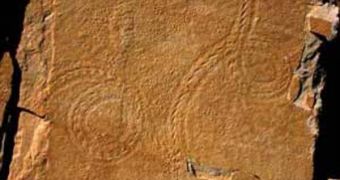According to fossil records dating back as far as 500 million years ago, the earliest arthropods to venture on land also looked for discarded shells to use for protection. The lineage is far older than that of the hermit crab, originating some 200 million years ago, and that was thus far the oldest known to exhibit such a behavior. The new research was conducted by experts James W. Hagadorn, from the Amherst College in Massachusetts, and Adolf Seilacher, from the Yale University, and published in the latest issue of the respected scientific journal Geology, LiveScience reports.
In their research in a well-known archaeological area in what is now Wisconsin, the team members came across tracks of Cambrian-period animals that made their way on what was then a sand flat. Their tracks were pristinely preserved in the soft rock. The experts propose that they were left in such good condition on account of a microbial mat that essentially protected them from the devastating actions of waves, until they became as hard as a rock.
The scientists also noticed that the ancient tracks were laden with intermittent, off-center impressions, which most likely came from the crawlers carrying a stolen home on their backs. Studies also revealed that the animals must have carried their shells oriented upwards, as in upside down, as opposed to modern-day hermit crabs, which carry it pointing downwards. The researchers say that the overall aspect of the arthropods would have resembled more the profile of a scorpion than that of a crab.
It would also appear that the first squatters were not too picky in their choices for a home. Most of the shells would have probably been too small to cover up the entire animal, and the team believes that the main role of the shell was to protect the gills from dessication, which would have killed the animal. This may have been the most important step in the creatures' transition from water to land, and may have offered evolution the necessary time to produce the changes needed for the animals to survive on their own.

 14 DAY TRIAL //
14 DAY TRIAL //